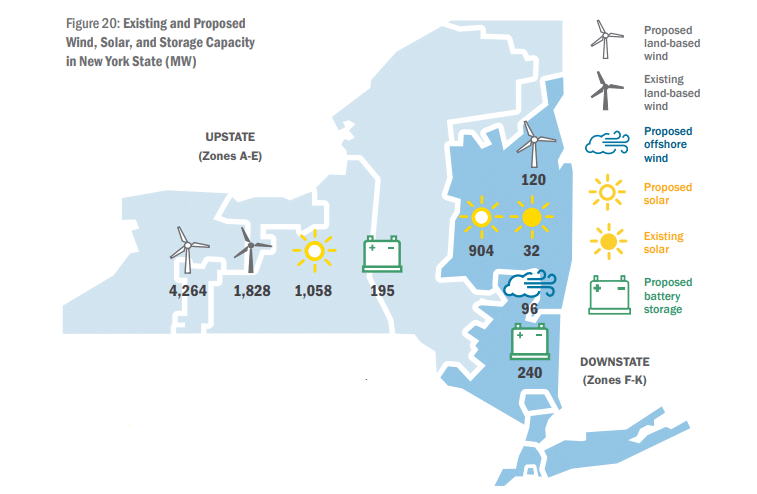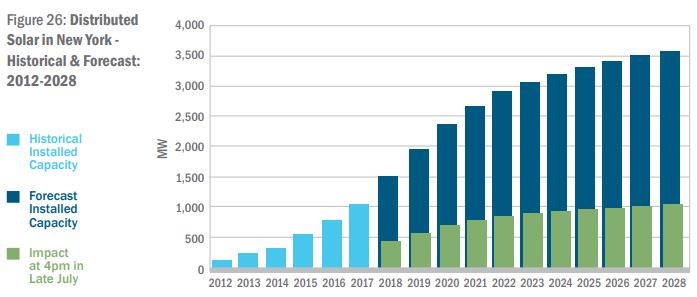The New York state electricity Independent System Operator (ISO) released a report, 2018 Power Trends, that projected the state’s electricity demand to fall by 0.14% a year for the next decade. The ISO predicts most of this decrease, even while the population increases, will be due to behind-the-meter distributed solar power and continued energy efficiency gains. The report also expects peak load to decline by 0.13% a year as well.
The state anticipates total installed capacity of behind the meter solar power to be 1,504 MW in 2018 and 3,577 MW in 2028. The state also expects significant utility scale solar power, in front-of-the-meter-solar in addition to this volume, with as much as 500 MW in 2018 alone, and many more projects in the future via annual procurements.
The ISO says the ongoing transition is a complex one that will involve building many new technologies on the power grid – distributed energy storage, microgrids, wind power, upstate renewables and transmission infrastructure to transfer electricity from the open land areas upstate to the heavy population downstate. Concurrently, these new technologies must be deployed at a time when wholesale electricity generation prices are at generational lows, though getting investors to do so can be a challenge.

Behind-the-meter solar resources in New York are expected to reduce peak demand on the bulk power system by 440 MW in 2018 and by 1,038 MW in 2028.

The peak demand conversation involves solar power, since up to 1 GW worth of solar will have an effect on production during the afternoon ramp that starts around 4 PM. The report also references the seasonality of renewable energy also – not shying from the challenges managing intermittent production.
These behind-the-meter solar resources are also expected to lower annual energy usage served by the bulk power system by 1,768 GWh in 2018 and by 4,420 GWh in 2028. In order to reach the state’s 50% renewables 2030 goal, 70,500 GWh of renewable energy, on top of current production, must be generated.
Included in the NYISO’s 2018 data is a forecast of the cumulative impacts of electric vehicles (EVs) on energy usage and peak demand. EVs are expected to increase peak demand on the system by 15 MW in 2018 and by 343 MW in 2028. Similarly, EVs are expected to increase annual energy usage served by the bulk power system by 69 GWh in 2018 and 2,078 GWh in 2028.
The timing of renewable growth and behind-the-meter demand reductions is the subject of increasing focus, as a large volume of the state’s fossil electricity generation is approaching retirement age. By 2028 8.3 GW of thermal energy resources, ‘will reach an age beyond which 95% of these types of capacity have deactivated.’
This content is protected by copyright and may not be reused. If you want to cooperate with us and would like to reuse some of our content, please contact: editors@pv-magazine.com.









Load, not loan for the title, yes?
Yeap, ty